AMONG the collections purchased last summer none is of greater importance than the bronzes and carved elephant tusks from Benin.
Great Benin, a negro city and capital of a kingdom of the same name on the coast of Guinea and near the banks of the Niger, was discovered by Portuguese navigators in the fourteenth century. It was then a rich city enjoying a profitable trade in slaves. Later and for several centuries, successive kings established trading relations with Dutch, Swedish and English expeditions. Sir Richard Burton made a trip to Benin to try to put a stop to the human sacrifices for which it had become notorious and which had given it the name of the city of blood. In 1892 it was visited by another Englishman, Captain Galloway. He found that its former wealth and greatness had departed. The general abolition of the slave traffic had destroyed its prosperity and the king had closed the gates of the city to all Europeans, prohibiting all intercourse between them and his people.

Museum Object Number: AF2060A
Image Number: 611
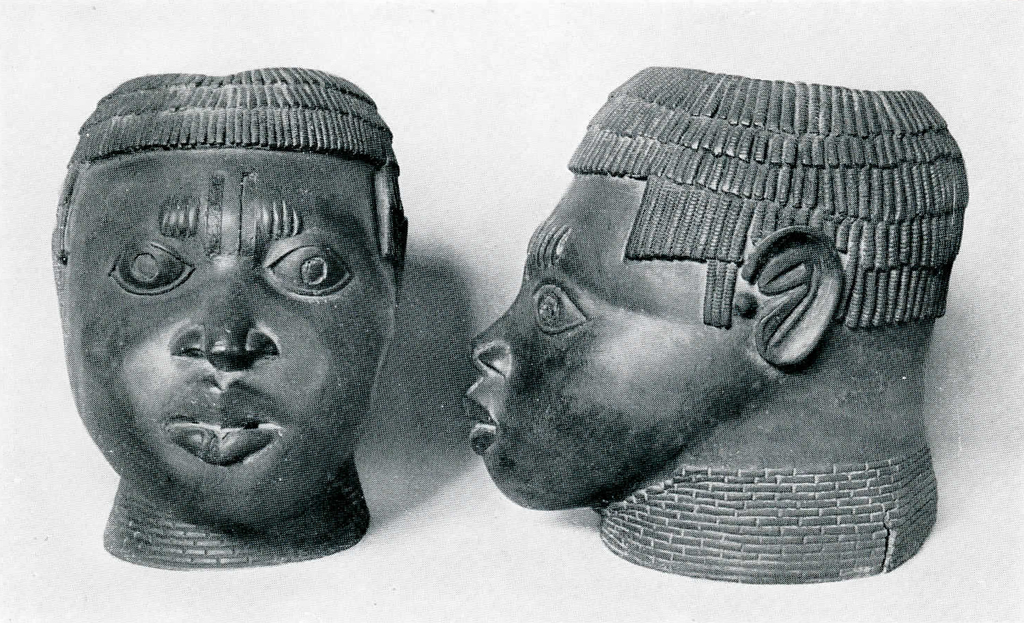
Museum Object Number: AF2064A
Image Number: 619
In 1896 an unarmed and friendly expedition approached Benin city against the orders of the king, and contrary to the advice of the neighboring chiefs. Disregarding all warnings of danger and with no preparations for defence, the two hundred and fifty members of the expedition marched right into an ambuscade prepared for them in the forest. Only two men escaped to tell the tale in the British settlements on the coast.
Five weeks later an English military expedition entered Benin to punish the offense. The city was found to be wet with human blood from the sacrifices that had been offered according to the religious rites and customs.
In the king’s compound and in the blood-encrusted temples were found a large number of curious works of art in bronze and in ivory. The natives could give no information about these objects, which still remain something of an ethnological enigma. Some of them were encrusted with blood, having served in connection with human sacrifices. These antiquities were carried away by the members of the expedition. A large collection went to the Museum in Berlin, and an excellent series was secured by the British Museum. The collection now in the University Museum was procured in London from former members of the expedition that captured Benin.
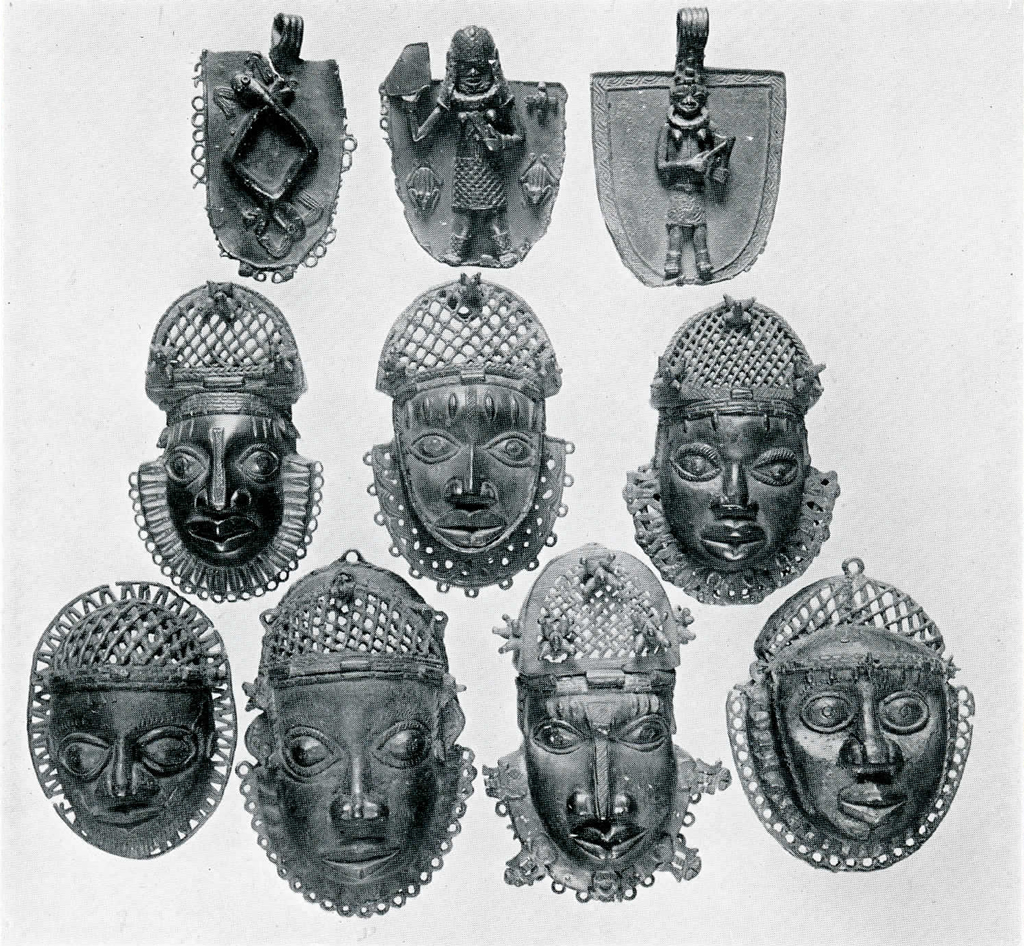
Museum Object Number: AF2073A / AF2074 / AF2078B
These curious bronze relics represent a phase of art and a body of artistic products of which we have no actual history. In many ways it is an advanced art, for the modelling is often admirable and the casting of complicated figures on plaques shows an unusual amount of skill and knowledge of metallurgy.
The carved elephant tusks were set up in the Juju houses or temples, especially in those that stood near the king’s compound. They stood in rows on the altars and were apparently objects of veneration. Sometimes they were supported upon bronze heads like the one shown in Fig. 39, or like that shown in Fig. 40, said to be portraits.
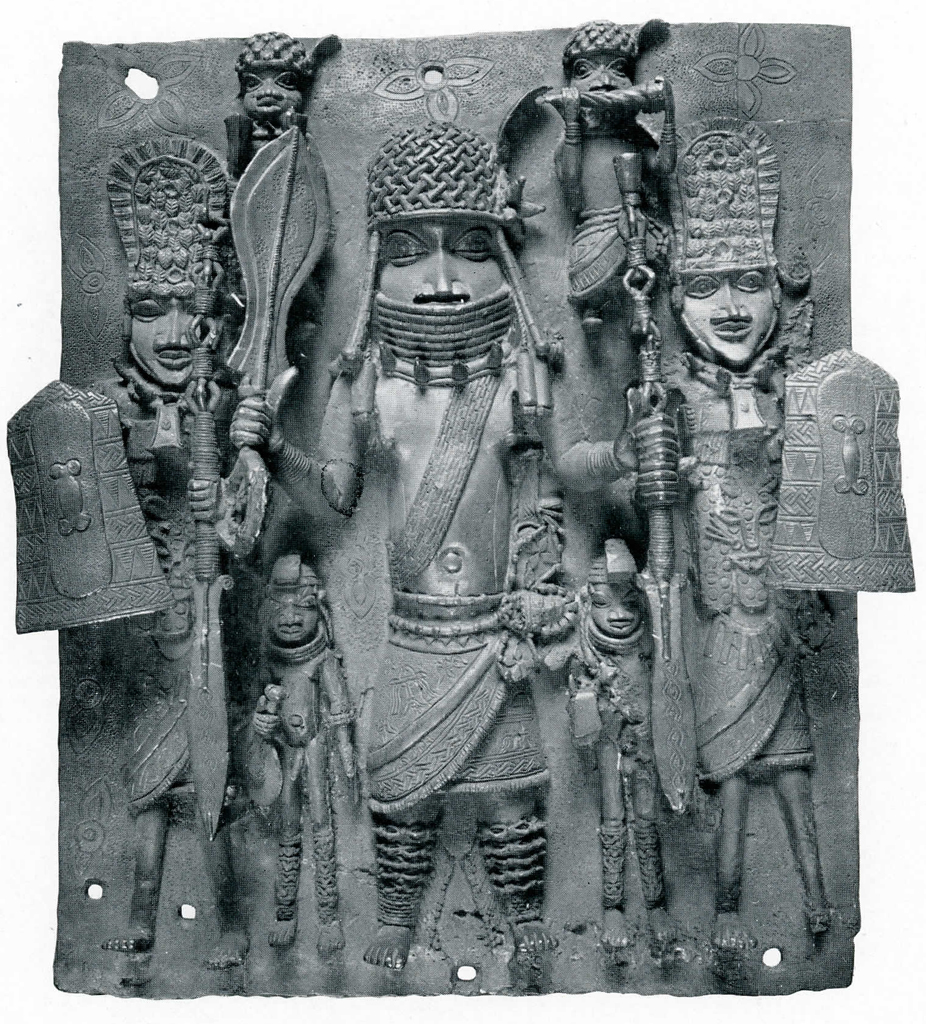
Museum Object Number: AF2066
Image Number: 621
The Benin bronzes represent the highest level the art of casting has ever attained; according to von Lushan neither Benvenuto Cellini, nor anybody else could have done finer work. All the specimens in this Museum have been produced by the process known as “cire perdue,” which is the following: A wax model, representing exactly the object to be produced is shaped; if the object is, however, not a flat one, a clay core has to be used and it is on this that the wax model is formed. This core is not used to avoid waste of metal, as it may seem at first, but to assure even thickness throughout the object and consequently simultaneous cooling, without which distortions and cracks would be inevitable. The fixing of this clay core is one of the greatest difficulties of the process.
The finished wax model is covered with a very fine-grained paste, and then the whole is allowed to dry slowly, holes being made in the covering clay for the escape of the molten wax and the air. One hole serves to pour in the metal. The dry model is carefully heated until all the wax is molten and then filled with metal. The difficulties the casting itself offers are enormous. Few perfect specimens are obtained, the imperfect ones being molten down. When the outer mould is removed (broken) the casts, even those which may be called perfect, are far from being finished. A considerable number of irregularities have to be filed away and supplementary fine details have to be chiseled; the patterns on the background have to be “punched” in.
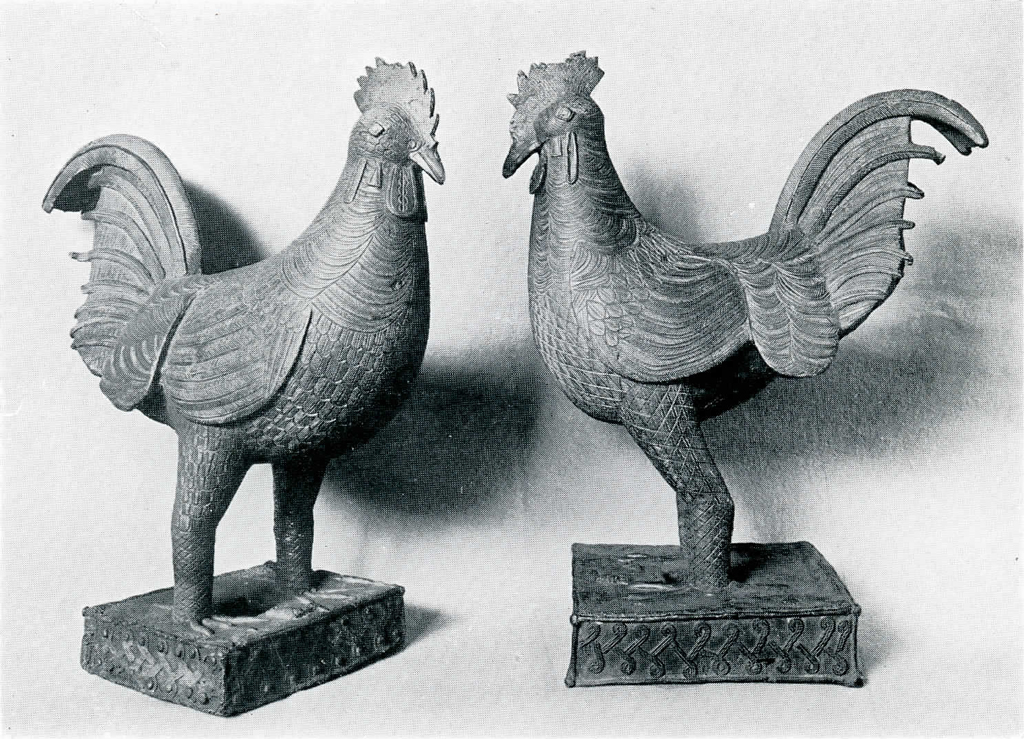
Museum Object Numbers: AF2065A / AF2065B
Image Number: 620
The process of “cire perdue” was known in Europe in prehistoric times and most authorities assume that it must have been brought to the Guinea coast by the Portuguese. It must, however, not be forgotten that the art of casting existed in parts which were not visited by the Portuguese. Small animals and other objects cast in bronze are found along the Gold Coast and Ashanti and which can have only been produced in a similar way, as those of Benin, although they are far from having the high workmanship of the latter. The Museum has recently acquired a small cast metal head, coming from the very center of Africa. However, the fact, pointing to European influence, that the bronze plaques of Benin sometimes represent Europeans dressed and armed according to the fashion of the sixteenth and seventeenth centuries, cannot be disregarded.
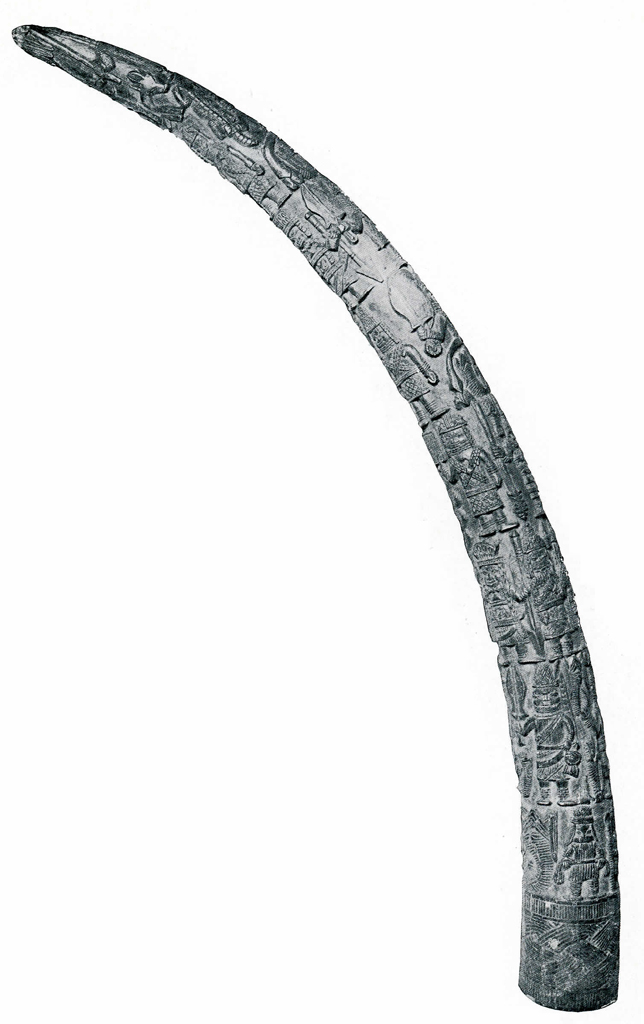
Museum Object Number: AF5067
The ivory carvings are purely African. They are usually covered with carved figures of important personages together with bands of conventional form or designs representing basket work. In the museum collection there are four carved tusks; one is six feet in length and is carved over the entire surface. Such carved tusk are said to have been placed upright on the altars and supported by bronze heads, such as those illustrated in these pages. The other tusks in the collection are smaller and carved only at intervals with conventional designs.
The collection contains in all 118 pieces, which represent in a very satisfactory way the entire field of Benin art. It furnishes a rare lot of examples for the study of some of the earlier forms of artistic expression and the history of sculpture. Great Benin will be remembered by its artistic productions long after the story of its horrors are forgotten.

